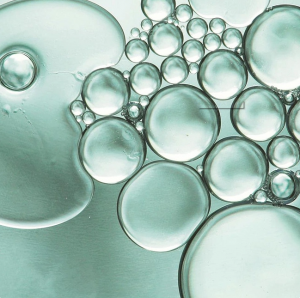Research has shown that emotional problems can cause skin symptoms, including dryness, increased oil secretion, and allergies, which can lead to acne, dark circles, skin inflammation, and increased facial pigmentation and wrinkles.

At present, there are four main strategies to improve skin condition by regulating emotions:
The first strategy is that the good skin feel of cosmetic ingredients can cause cells to release PROKR-2, so that users can get better mood while improving skin condition. The good skin feel of skin care products is directly related to the sense of touch. During the skin care process, it can activate the CT fibers in the skin, release the comfort peptide PROK2, and activate the comfort receptor PROKR2, bringing people a pleasant feeling, soothing emotions, and relieving anxiety.
The second strategy is to start from the perspective of the nervous system, and maintain the balance of the body's internal environment by regulating the molecular levels in the body that are closely related to emotions, such as endorphins and cortisol, so as to improve the skin condition. Neuro-cosmetics can precisely act on the nervous system of the skin through active ingredients, and it is feasible to regulate emotions and skin. This may be the next stage of iterative upgrade of skin care products in the future.

The third strategy is to add some plant essences with natural aromatic smells to the cosmetics to make users feel happy and relaxed through the sense of smell. The most typical aromatherapy is like this to relieve emotions. By adding natural plant-extracted essential oils to skin care products, the molecules volatilized by these plants will enter the human body through the human olfactory system, mucous membranes and other channels and can stimulate the hippocampus of the brain.
The fourth strategy is to create pleasant emotions on the visual packaging of skin care products! For some skin care products, rather than studying the concentration and efficacy of raw materials, they are more willing to spend a lot of effort on the ceremonial places such as the color of the product, the texture of the paste, and the packaging. The reason is also to create a pleasant emotional value. Color is a catalyst of emotion and works through the human vision. The wavelengths of light emitted by different colors are different. When the human eyes are exposed to different colors, the associations and reactions made by the brain nerves are also different. Therefore, colors have a direct impact on people's emotions and psychology.

The overall scope of emotional skin care is wide, and it seems that the barriers to entry are not high. Brands can find entry points in terms of ingredients, smell, skin feel, packaging, etc.; however, upon closer inspection, there are still several major difficulties in technological barriers, regulations and policies, market awareness, and consumer education.
Post time: Jul-21-2023

